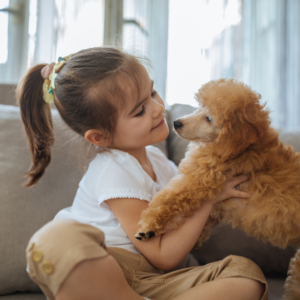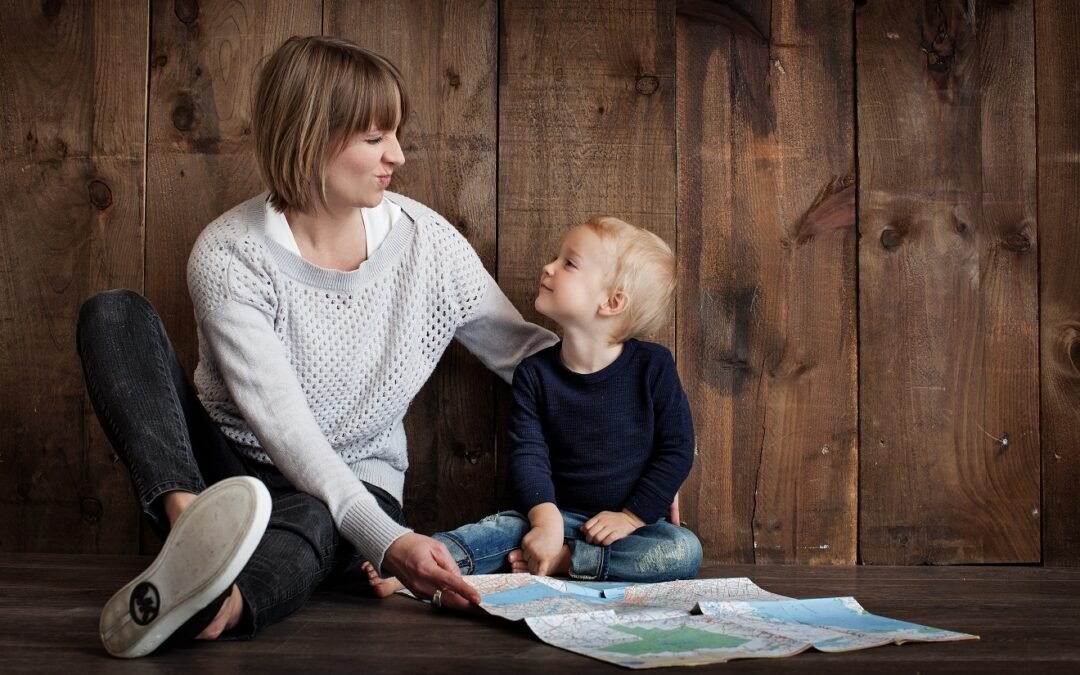My kids have had several pets over the years, and a few have crossed the line into providing emotional support. Does that make them service animals? No. They don’t have the special training required for that label. However, that doesn’t mean they are not important and helpful. Today, I am going to provide some advice to parents thinking about adding an emotional support animal to their home.
What is an emotional support animal?
“According to the U.S. Department of Housing and Urban Development (HUD), an emotional support animal is any animal that provides emotional support alleviating one or more symptoms or effects of a person’s disability. Emotional support animals provide companionship, relieve loneliness, and sometimes help with depression, anxiety, and certain phobias, but do not have special training to perform tasks that assist people with disabilities. Emotional support animals are not limited to dogs.” ~ ADA National Network, a site dedicated to helping people understand the requirements of the Americans with Disabilities Act.
When selecting an animal to support your child, it is important to remember a few things. First. when you get a child a pet, even a teenager, you are the responsible party and have to make sure the pet is cared for. Even if your child is very responsible, you need to check up on that pet often. Kids with ADHD will forget to eat meals, and if they forget to feed themselves, they can forget to feed a pet. So, do not jump into letting your child have a pet you won’t be willing to take care of.
One other thing you can’t control is whether your child and this pet will form the bond needed for the pet to provide emotional support. The disposition and temperament of both the child and the pet play a role in this. You can have a very sweet kid and a great dog who get along fine, but don’t form that bond. So, get a pet your family will be happy with as just a pet if that is all they are.
Selecting a Pet
 If your child asks for a pet they have never been around, I highly recommend you do your best to arrange for them to be around that type of animal. Pet it, cuddle it, feed it. Test it out.
If your child asks for a pet they have never been around, I highly recommend you do your best to arrange for them to be around that type of animal. Pet it, cuddle it, feed it. Test it out.
A few years ago, when it wasn’t easy to get together with strangers, my middle child asked for a pet guinea pig. We did research. I called a friend who has literally had every pet and has worked in a pet store. I asked all the right questions. And we went to a store and got 2 young male guinea pigs. They were exactly what I expected and a great pet, if you want a rodent.
What I failed to learn in advance, is that several members of my family break out in a rash after holding a guinea pig for any time at all. This includes my middle child. The allergy did not become obvious until we had owned them for a few months. I don’t know why that is. Perhaps the frequent exposure helped the allergy to worsen.
My kid has kept the guinea pigs and takes good care of them. He washes carefully after handling them and doesn’t hold them for too long. After a round of eczema that was difficult to clear up, my husband is not allowed to hold them anymore. While they are still cute pets, I can’t say they are a good emotional support animal because of the allergy. That isn’t anyone’s fault, it just is.
However, my biggest advice now to potential pet owners, is to have your child spend time with any pet you are considering, so you can assess for allergies. Another potential allergen is the food or bedding of some pets. For example, if you have an allergy to grass, having a bag of hay for your guinea pigs can be problematic to have in a bedroom or other room you spend time in.
Training Your Pet
 No matter what kind of emotional support animal you get, you and your child will need to spend time training it. What kind of training it needs depends on the pet. Some pets need to be trained to be handled. Almost all rodents are naturally skittish because they are prey animals. You have to work with them to teach them to not fear being handled and to accept food from your hand. The internet is full of free advice on this topic, so do some research and learn the best way to work with the pet you have.
No matter what kind of emotional support animal you get, you and your child will need to spend time training it. What kind of training it needs depends on the pet. Some pets need to be trained to be handled. Almost all rodents are naturally skittish because they are prey animals. You have to work with them to teach them to not fear being handled and to accept food from your hand. The internet is full of free advice on this topic, so do some research and learn the best way to work with the pet you have.
If you choose to have a dog as your child’s emotional support animal, you will need to train it. If you get a puppy, there are lots of videos about what to do with your puppy in the first few weeks that I found very helpful with our youngest dog. My favorite tip was putting the puppy in a crate on my nightstand, so when he whimpered at night I could comfort him and take him out to go potty. That way he didn’t form any bad habits and we worked toward potty training right away.
I also strongly recommend sending both the dog and child to training classes, assuming your child is old enough to help do the training. Your dog needs to come when you call their name, be able to sit or stay for safety, and be socially appropriate with other dogs. Your child’s emotional support dog should be comfortable and safe with other dogs so that it will never attack a service dog or other pet when you are out with it, too.
While emotional support dogs are not welcome in as many places as service dogs, you need to be a responsible dog owner. My friends with service dogs say their dogs have been attacked on the job often, by poorly trained “emotional support dogs.” I put it in quotes because it is a fact that not every dog out in public is providing a service, some dog owners just use the label so they can take their dogs with them.
 Dogs are very trainable, however, knowing how to train them is not intuitive. Even if you had dogs as a kid, you may need professional help in the form of books, videos, or classes. And never leave your child in charge of training the dog themselves. The dog needs to obey everyone in the family, but especially you, as the adult.
Dogs are very trainable, however, knowing how to train them is not intuitive. Even if you had dogs as a kid, you may need professional help in the form of books, videos, or classes. And never leave your child in charge of training the dog themselves. The dog needs to obey everyone in the family, but especially you, as the adult.
One last tip with choosing a dog, be sure to do research on the breed of dog you are considering and make sure it is a match for your lifestyle. Some breeds need lots of exercise. Some require you to vacuum up the shedding hair every day. Some breeds are okay with being left home alone while you are gone, and other breeds will lose their minds and need to be with their people all day, every day. If you live in a tiny house, a large breed dog might be overwhelming, and uncomfortable. Choose wisely.
Taking Your Pet With You
No matter what kind of emotional support animal your child has, you need to consider how it will travel. Some pets, like goldfish, are best left at home. Some are challenging to transport and others are much easier. Whatever the pet, before taking it out in public, you need to be confident it will stay with you and your child, on its leash, or by whatever means. You also need to be confident it will not harm other people or pets. Practice trips to the yard, then the homes of friends then gradually more places like the park are good steps to go through. Do not jump into long complicated trips before your pet is ready for them.





0 Comments